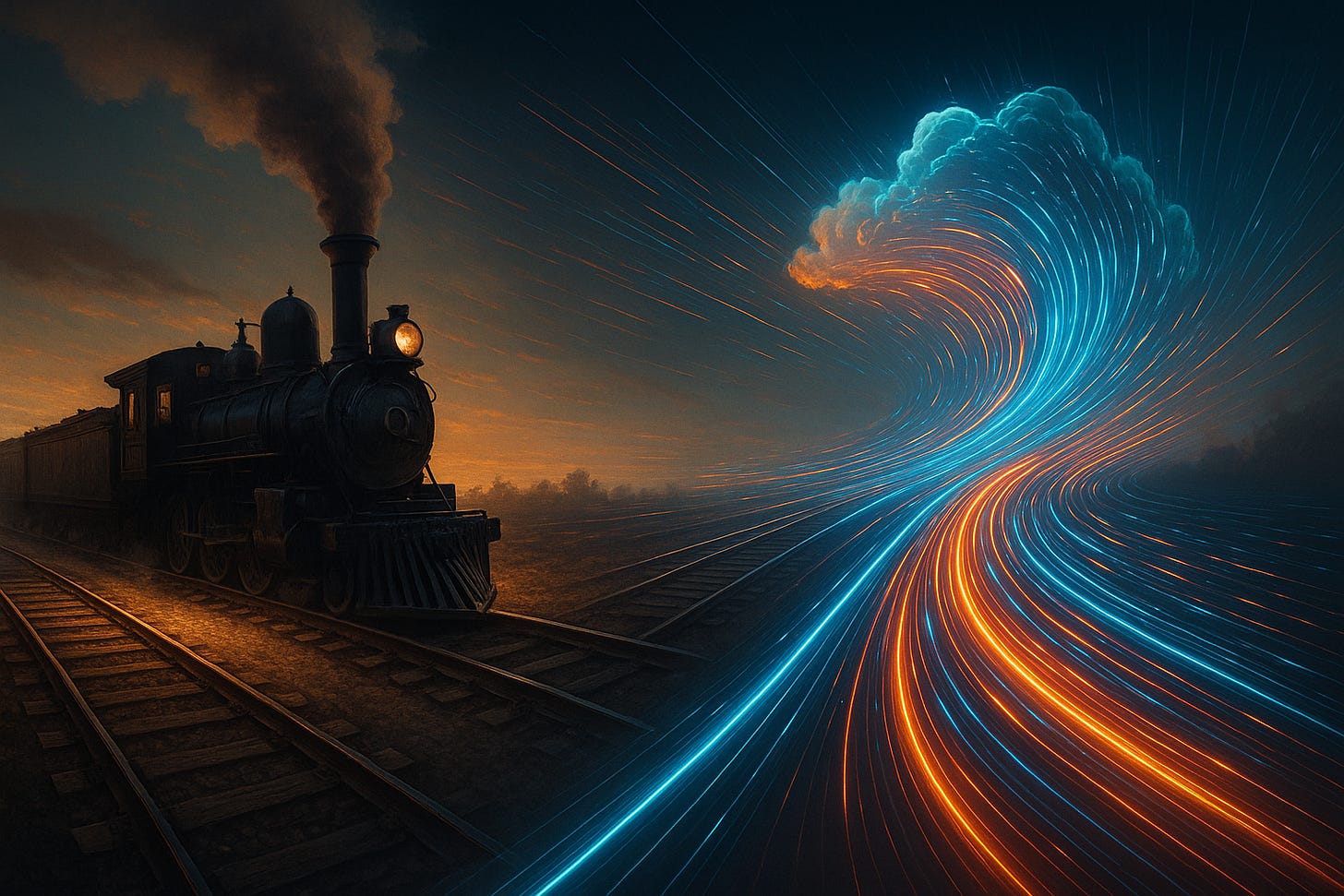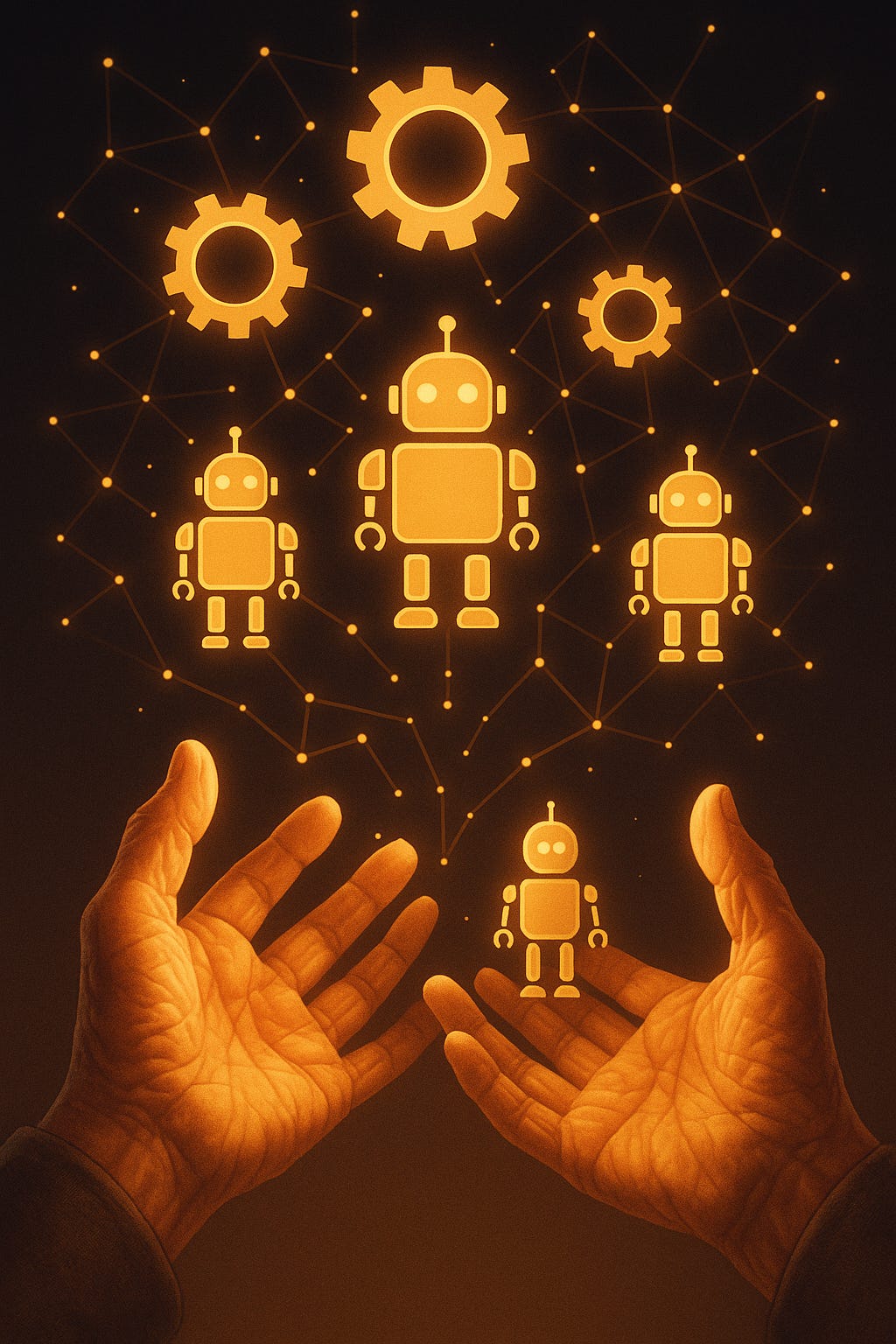From Railroads to the Cloud: Building Freedom in the Age of AI
DA Frontier — Where hype meets humanity, and the frontier gets real.
Introducing Frontier
Every age has its edge. For Digital Articulation, Origins explored how ancient wisdom and lost technologies still shape our world. Now, with DA Frontier, we turn our eyes forward — to the cutting edge of innovation where today’s experiments become tomorrow’s systems.
But this isn’t a hype parade. The Frontier isn’t about chasing buzzwords. It’s about asking hard questions:
What happens when agentic AI becomes your new middle management?
Who owns the rails of digital infrastructure — and what does that mean for national and corporate freedom?
How do we design systems that sustain themselves instead of locking us into fragile dependencies?
DA Frontier exists to explore the promises and perils of emerging technology — not just what’s possible, but what it means.
Which brings us to the first question at the edge of our digital age: who owns the rails of the future?
A Lesson from the Rails
“Imagine if we had allowed foreign entities to control the railroad. It ultimately wouldn’t allow us to be a sovereign nation.”
— Benjamin Bergen, Council of Canadian Innovators
In the 1800s, nations invested heavily in railroads, electricity, and telecommunications. These weren’t side projects — they were nation-building imperatives. If you didn’t own the infrastructure, you didn’t own your future.
Fast forward to today: our digital infrastructure — cloud, compute, and AI platforms — is largely outsourced to foreign players. We chose speed and cost over ownership. But just as railroads shaped which cities thrived or died, today’s digital “cloud” will determine which economies and enterprises flourish tomorrow.
The Fragility Exposed
The pandemic revealed the cracks in our supply chains. Efficiency without resilience left us scrambling for PPE, semiconductors, even groceries. More recently, tariffs and geopolitical tensions have reminded us how fragile global dependencies can be.
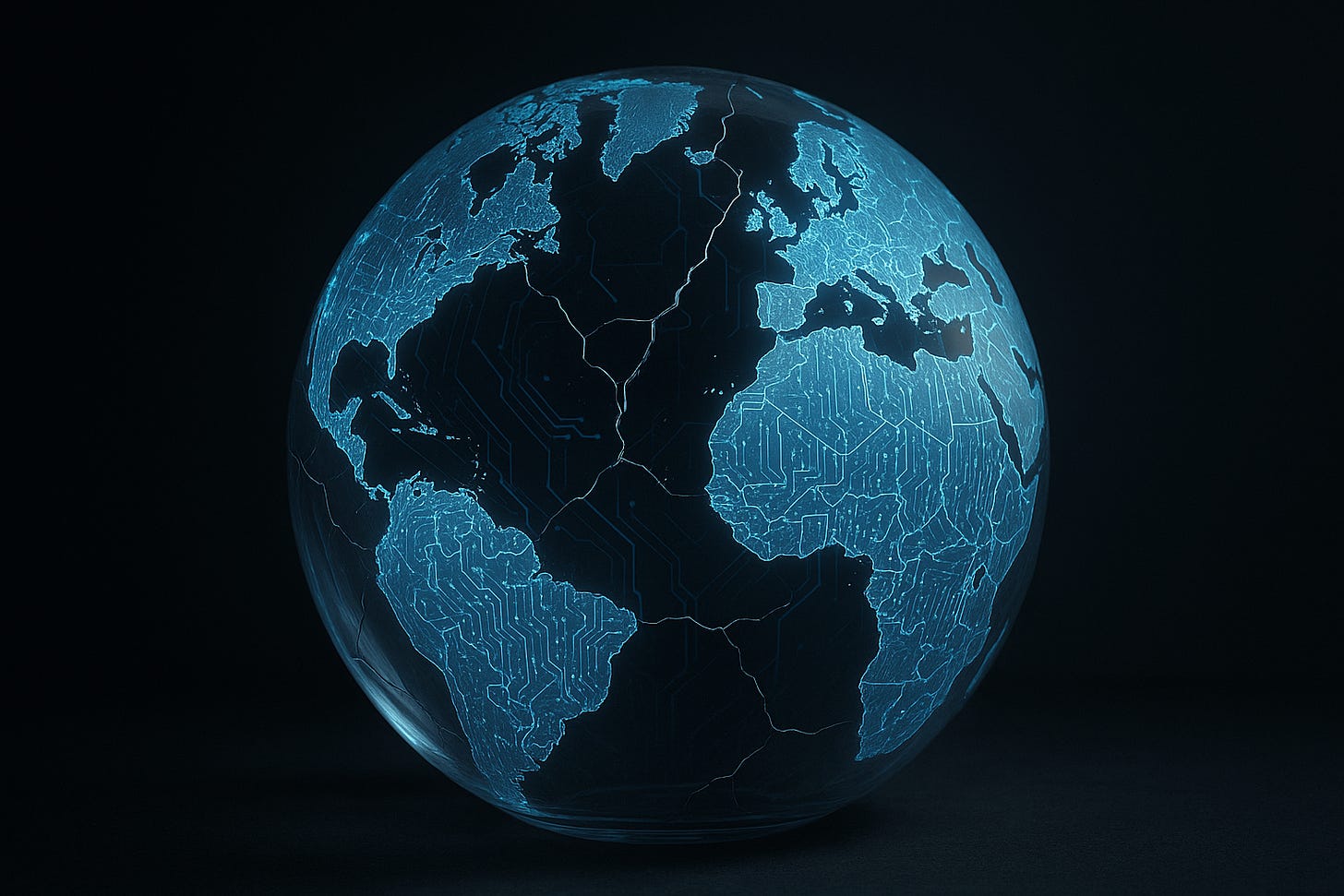
Digital infrastructure is no different. When chips are delayed, clouds are locked down, or platforms change terms, organizations are left exposed. The short-term bargain — cheaper, faster, outsourced — carries long-term costs that few executives have fully accounted for.
The Renewable Energy Analogy
The energy sector shows us both the problem and the path forward.
The gasoline tank is still the perfect battery. Portable, reliable, works in every climate. For all the innovation in renewables, nothing has yet matched its simplicity.
But renewables flip the model. Solar panels, wind turbines, and batteries allow individuals and communities to generate and sustain their own energy. The appeal isn’t just environmental — it’s freedom. You’re not at the mercy of OPEC or grid blackouts.
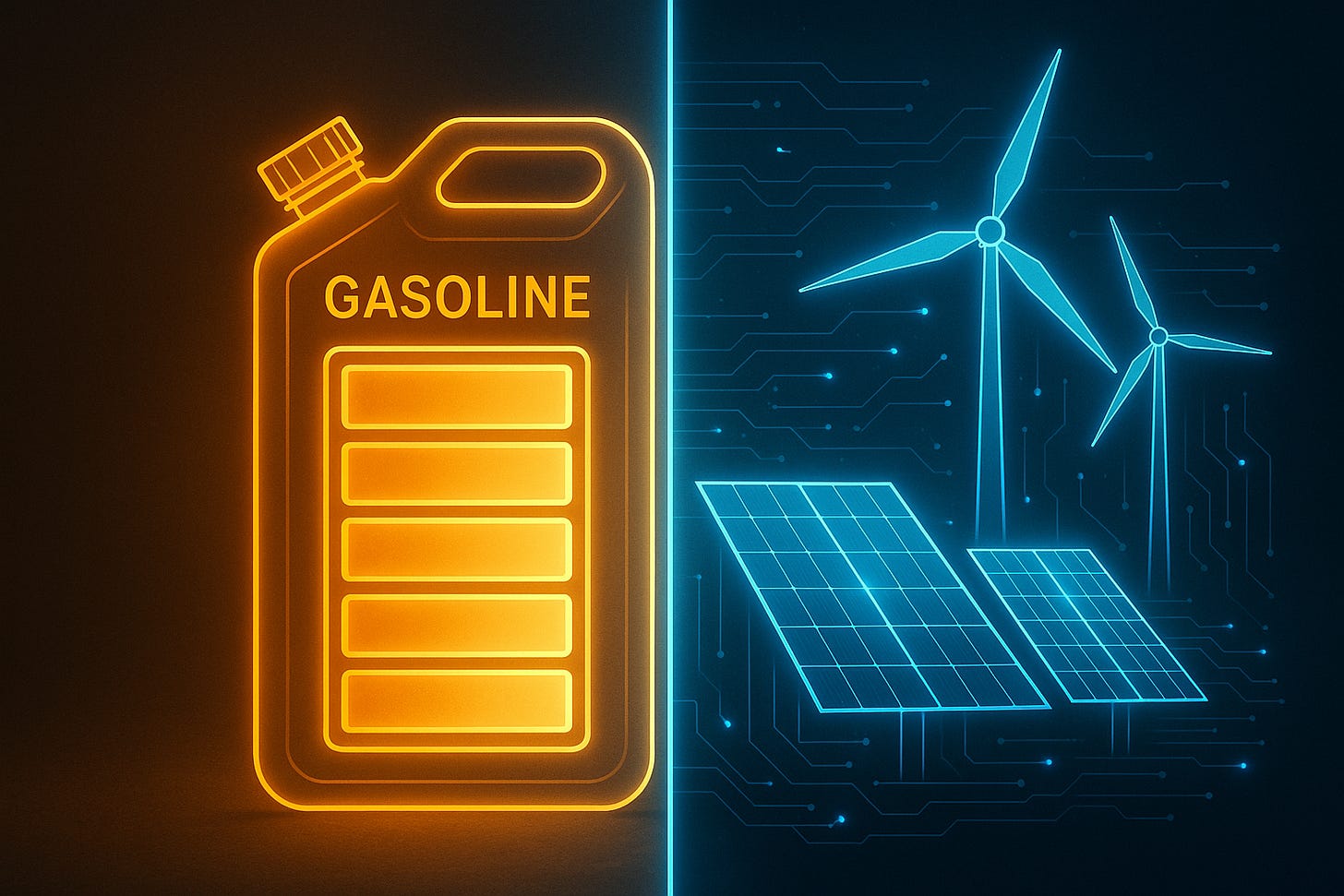
The same transformation is needed in the digital world. Instead of relying solely on massive centralized platforms, we need digital systems that are:
Distributed (like solar panels on every roof).
Resilient (able to function even if the global grid falters).
Self-sustaining (automated, system-to-system, not dependent on aging human-intensive models).
Climate Control, Not Climate Chaos
Too often, we frame the future in terms of extremes — heat vs. cold, scarcity vs. abundance, dependency vs. sovereignty. But the real opportunity isn’t in swinging between poles; it’s in designing climate control — systems that create stable, reliable, human-centered experiences regardless of external chaos.
In energy, that means shifting from fossil fuel volatility to renewable resilience.
In digital, it means moving from fragile outsourced platforms to self-sustaining systems that give people and enterprises freedom to thrive.

The focus should not be on surviving the extremes but on engineering environments — physical and digital — that give people the best possible experience.
Why Executives Must Care
This isn’t abstract. For business leaders, the infrastructure debate translates into direct strategic stakes:
CIOs → Vendor lock-in isn’t just technical debt, it’s geopolitical exposure.
CFOs → Efficiency gains may mask systemic risks; resilience belongs on the balance sheet.
COOs → Automation must shift from people-to-system workflows to system-to-system design.
CEOs → The long-term vision is freedom: to operate, adapt, and thrive without being hostage to outside forces.

Just as boards once debated energy strategy, today they must debate digital sustainability strategy.
From Sovereignty to Self-Sufficiency
The word sovereignty can trigger fear — of nationalism, of protectionism, of closing doors. That’s not the future we want to build. What we need isn’t digital nationalism, but digital self-sufficiency.
Not fear of dependence, but the freedom of independence.
Not isolation, but resilience.
Not short-term outsourcing, but long-term system building.
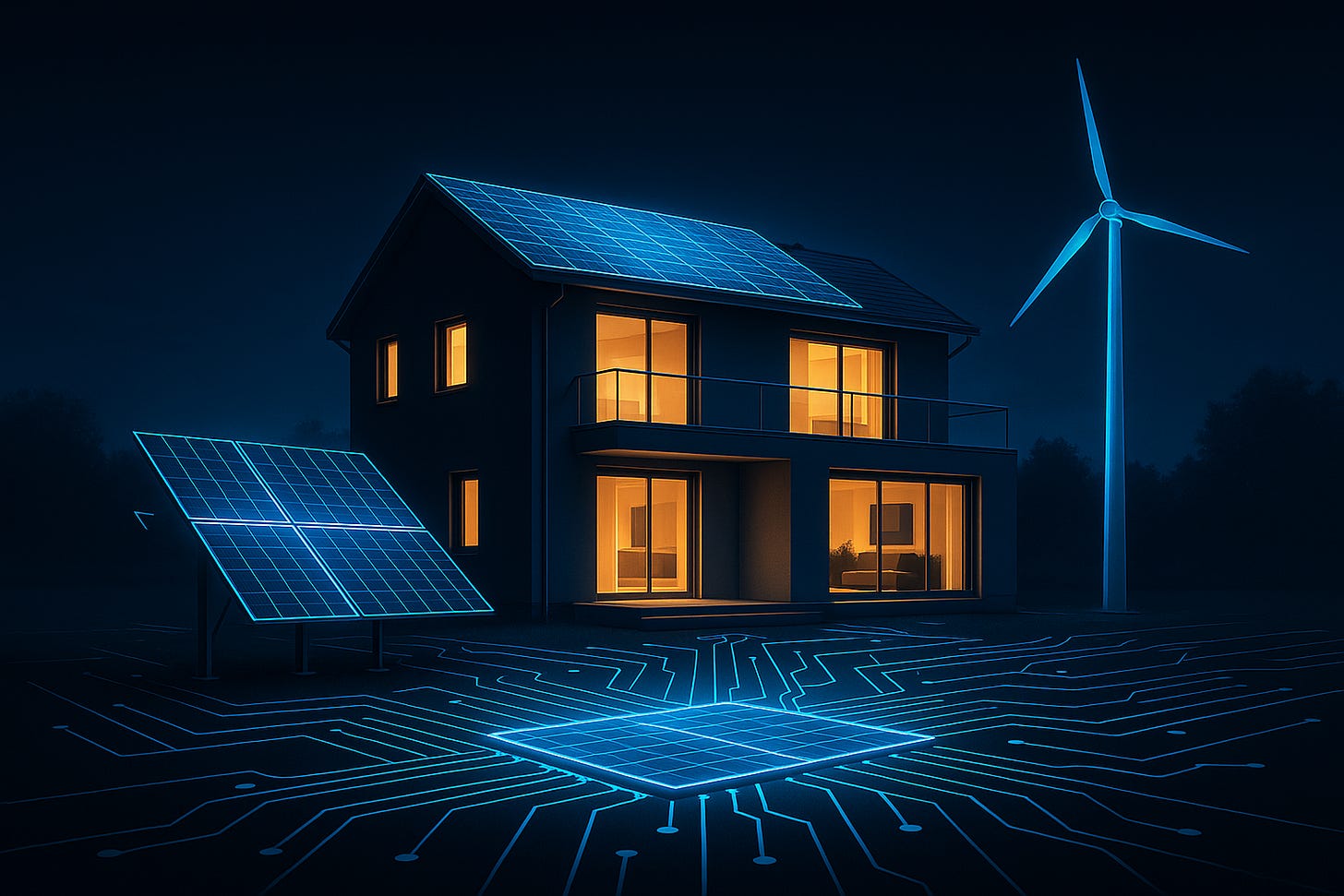
Think less about drawing borders, and more about building grids — renewable, digital, and resilient.
The Aging Challenge
There’s another force reshaping this conversation: demographics. Populations across Canada and much of the developed world are aging. Labor-intensive systems simply won’t scale in the next two decades.
That means automation isn’t optional — it’s inevitable. But the real shift isn’t about replacing people. It’s about designing system-to-system resilience, where infrastructure carries more of the load and humans are freed to focus on higher-value work.
The Next Frontier: Freedom Through Design
From the discovery of fire to the harnessing of electricity to the promise of nuclear energy, every leap in human progress has been about one thing: giving people more freedom. Freedom to live longer, move farther, work faster, create more.
The digital frontier is no different. The question isn’t whether AI or cloud will dominate — it’s whether we design systems that free people from fragility, or systems that lock them into dependency.
Railroads connected nations.
Power grids lit up cities.
Telecom lines shrank distances.
Now, digital clouds must deliver freedom — not fragility.
Executive Takeaways
Learn from History: Railroads and grids weren’t outsourced. They were built as national investments.
Think Renewable: Self-sustaining digital systems are the new solar panels and microgrids.
Plan Beyond Efficiency: Resilience must be designed in, not assumed.
Reframe the Question: This isn’t about sovereignty vs. dependence — it’s about designing systems that keep people free.

Closing Thought
The real measure of progress isn’t how fast we move or how cheaply we operate. It’s whether we build systems — energy and digital alike — that give people stability, resilience, and freedom, no matter the storm.
The gasoline tank may be today’s perfect battery. But tomorrow’s perfect system will be one that sustains itself — and sustains us.
👉 The next great frontier isn’t just artificial intelligence. It’s the design of self-sustaining systems that put human freedom at the center.
📌 DA Frontier exists to cut through hype and surface the human, cultural, and strategic stakes of emerging technology. From railroads to renewables to AI, the story is always the same: freedom belongs to those who build the infrastructure of the future.



